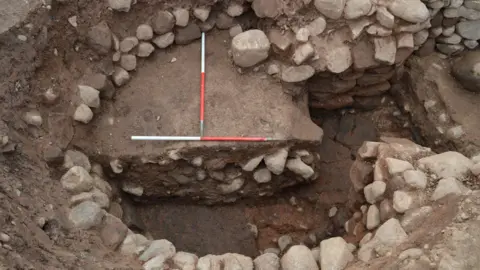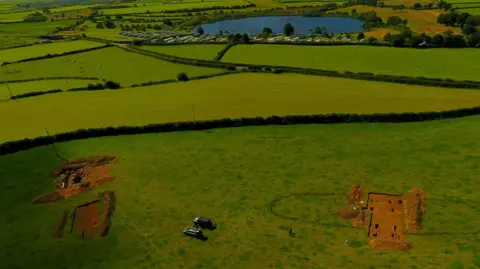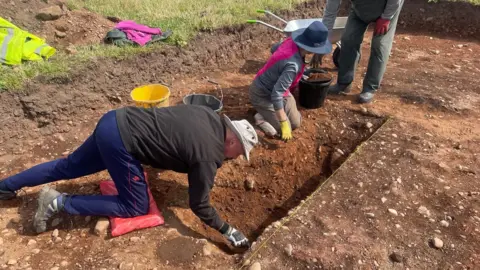Archaeologists find 'significant' Viking building
 Grampus Heritage
Grampus HeritageArchaeologists have unearthed what they believe to be a Viking-age building in a recent dig.
Teams of volunteers dug up High Tarns Farm in Silloth, Cumbria, in July after crop marks indicated a structure had previously been on the land.
Carbon dating of a timber building they discovered suggested it was a "large hall of the late-Viking age", archaeologist Mark Graham of Grampus Heritage told volunteers.
Mr Graham added the significance of the discovery in shedding light on the early medieval period and social structure in rural Cumbria was "hard to overstate".
More than 50 volunteers carried out the dig.
Mr Graham told BBC Radio Cumbria: "That excavation [was] totally delivered by community volunteers giving their time every day to come out to the trenches and uncover our shared past."
 Grampus Heritage
Grampus Heritage
In a letter written to volunteers, Mr Graham said load-bearing timbers they had found had a 94% chance of dating back to 990–1040 AD.
Similarly, a charcoal production pit and a corn dryer were likely to date back to the late 10th to early 11th Century, he said.
"It seems most likely that the hall is the focus of an early medieval manor farm," Mr Graham said.
He explained the site appeared similar to high status Viking age farms in Denmark, because it encompassed not only the hall but also the social structure and broader agricultural activity associated with them.
 Mark Graham
Mark GrahamMr Graham said it was a remarkable discovery.
"You really do not find much archaeology from that period [the Viking age] in our county," he said.
"It's a big gap in our knowledge."
Grampus led the excavations, which had been funded by the Department for Environment, Food and Rural Affairs.
A full excavation report would be released "in due course", Mr Graham added.
